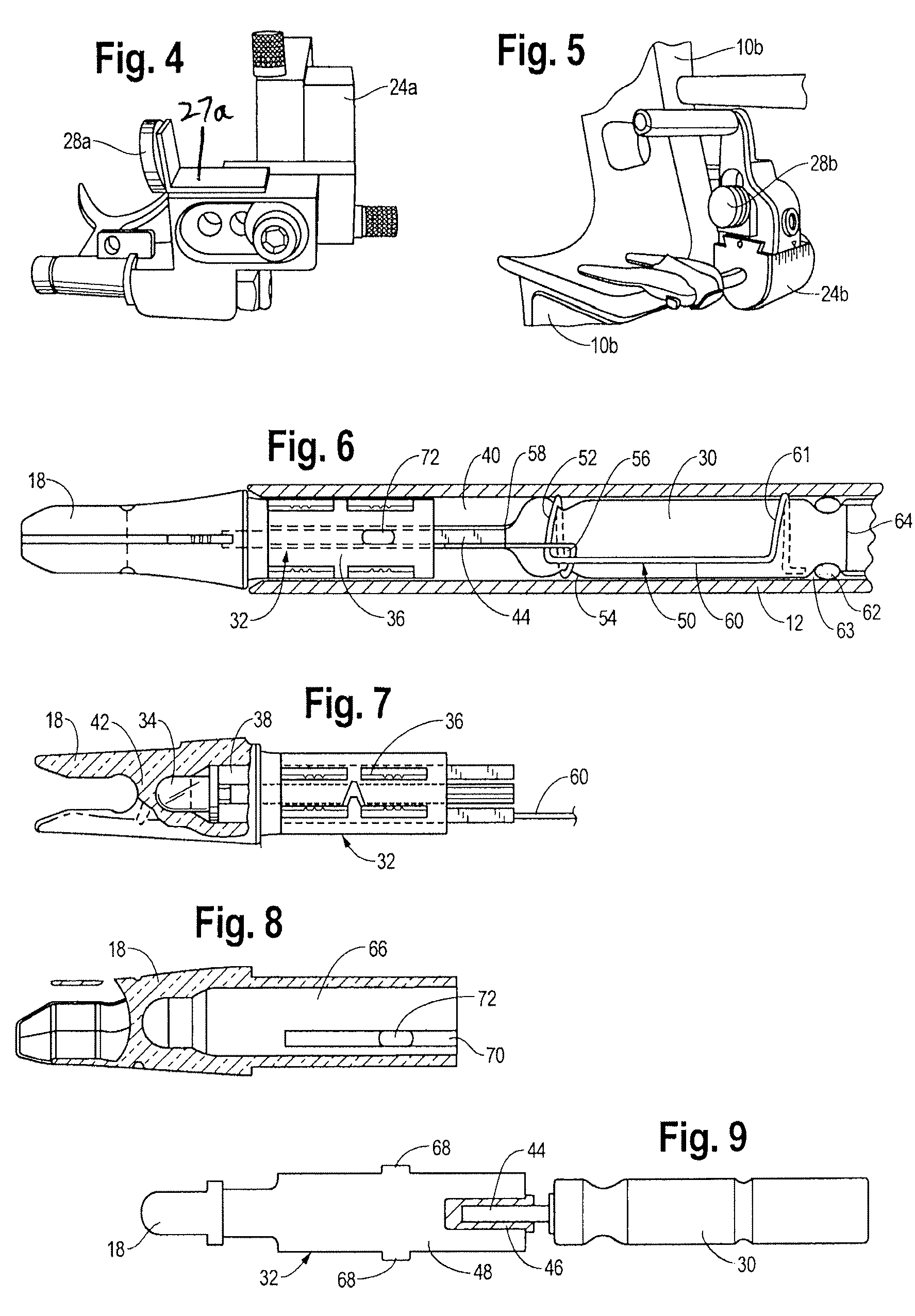Lighted nock for archery arrow
a technology of archery arrows and nocks, which is applied in the field of archery arrows, can solve the problems of unplanned light shutting off, huge disappointment, and light shutting o
- Summary
- Abstract
- Description
- Claims
- Application Information
AI Technical Summary
Benefits of technology
Problems solved by technology
Method used
Image
Examples
Embodiment Construction
[0007]By this invention, an archery arrow is provided which comprises: a shaft having forward and rearward portions, and having a rearwardly positioned tubular portion; a light transmitting nock attached to the rearward end of the shaft; a battery, which is typically carried in a hollow bore within the shaft; and a light assembly.
[0008]The light assembly, in turn, comprises: a light source positioned so that the light source is visible through the nock; a switch having normally open electrical contacts, the switch being closable upon momentary contact with a magnetic field; and circuitry interconnecting the battery, the switch, and the light source, for permitting illumination of the light source upon momentary sensing of the magnetic field.
[0009]In some embodiments, the light assembly of this invention may be free of the housing, and may occupy a first bore of the nock as well as a second bore of the arrow shaft rearward end.
[0010]The light transmitting nock may advantageously be p...
PUM
 Login to View More
Login to View More Abstract
Description
Claims
Application Information
 Login to View More
Login to View More - R&D
- Intellectual Property
- Life Sciences
- Materials
- Tech Scout
- Unparalleled Data Quality
- Higher Quality Content
- 60% Fewer Hallucinations
Browse by: Latest US Patents, China's latest patents, Technical Efficacy Thesaurus, Application Domain, Technology Topic, Popular Technical Reports.
© 2025 PatSnap. All rights reserved.Legal|Privacy policy|Modern Slavery Act Transparency Statement|Sitemap|About US| Contact US: help@patsnap.com



